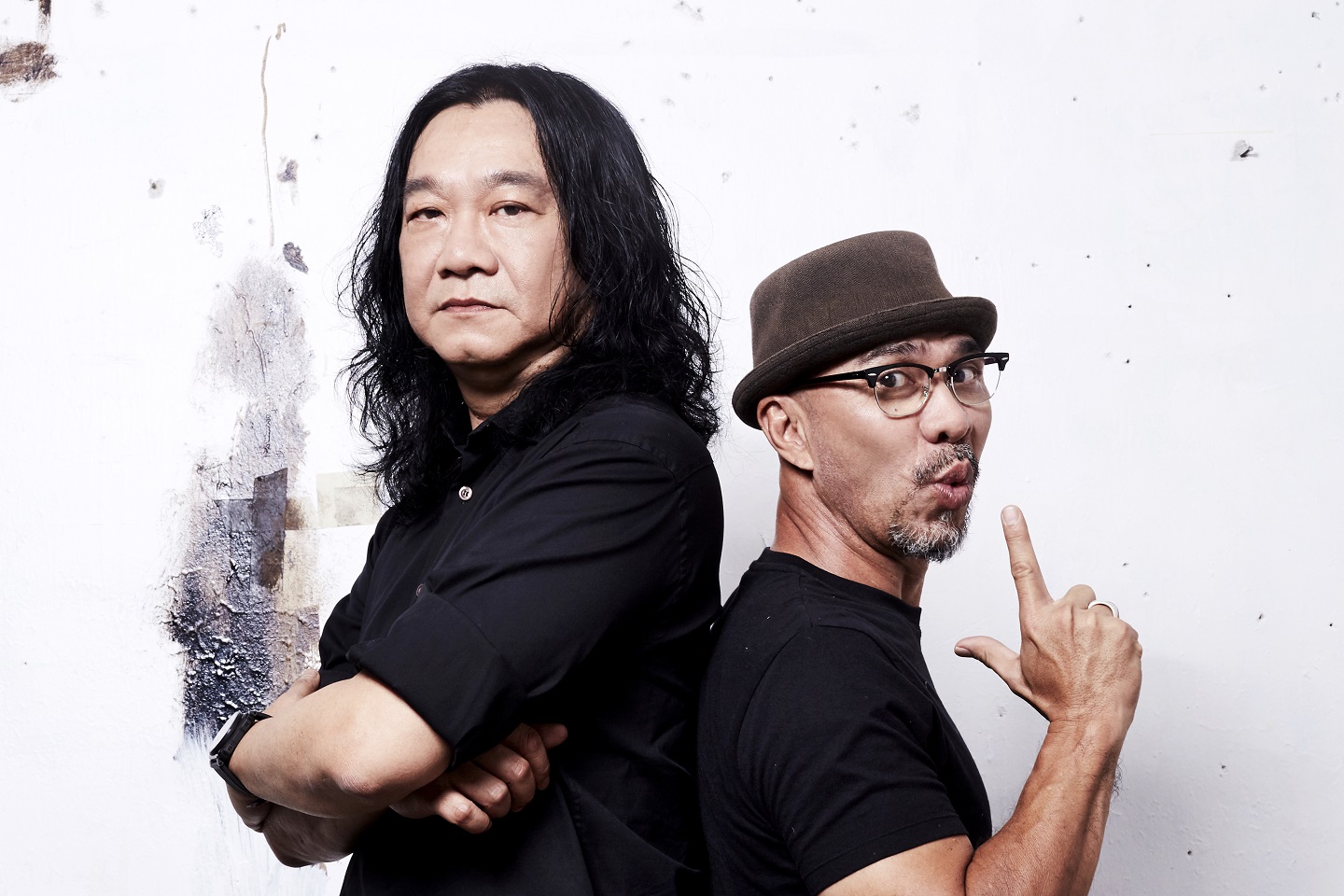
Bell & Ross Asia GM Tong Chee Wei (left) and contemporary artist Jalaini Abu Hassan (Photography by SooPhye)
It has been 15 years since Jalaini Abu Hassan shook up the country’s contemporary art scene with his brooding and mysterious Mantera collection. Comprising works done in charcoal, bitumen and ink, the series was inspired by sacred invocations, the name itself — a derivative of the Sanskrit “mantra” — an immediate giveaway. Through his hands, mystical words come to life in the form of dark, sepia-toned images, conjuring up visions of the shadowy realm of pawang and bomoh, a world where spirituality holds sway over the physical and one that is in stark contrast to the modern, moderate Muslim identity Malaysia is trying to propagate.
But it is hard to deny the power of blood and lineage. The artist is, after all, descended from a line of shamans and storytellers, the penglipur lara of old. “My grandfather had a book of mantras written in ancient Thai script that I stumbled upon. There were some words in Arabic, some in Malay too … and I remember how the back pages were stapled together and not to be read as they contained black magic incantations.”
In person, the artist affectionately referred to as “Jai” by all and sundry could not be farther from the stereotypical image one has of a successful, “tortured soul”. There is no hippie-style hair nor paint-splattered clothes — well, not outside of his studio anyway. Jai is often garbed in smart, form-fitting t-shirts and cool jeans, accessorised with a hat and a Bell & Ross timepiece. It was the watch that lit the spark for what will be the artist’s latest collection.
Ghost stories
Scheduled to be unveiled on July 12 at The Godown, a new event and arts space located on the site of the former (in)famous nocturnal hangouts in Kuala Lumpur, 11LA and the original Boom Boom Room, Ghost by Jalaini Abu Hassan will be a bijou staging, by industry standards. Four works, each measuring 8ft by 8ft, have been completed, with the fifth to be finished “live” at the launch of the event. This time, the artist’s materials feature a new ingredient: an unusual glow-in-the-dark dust, mixed with primer, so as to give a second dimension to the pieces once darkness falls. “It’s a new material for me and, thus, a new exploration,” Jai says, smiling. “Traditionally, I always go back to historical references for my work, be it colonial issues, politics, folklore or mythology. My Mantera series was so serious, so dark. And although the theme this time is Ghost, it is playful as it tells of childhood stories.”
_s1a9209abc.jpg
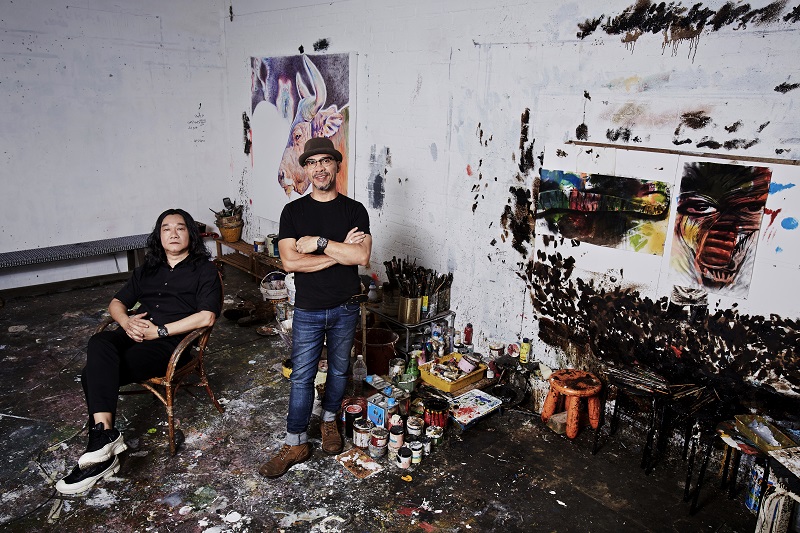
It was a chance meeting between Jai and Tong Chee Wei, general manager for Bell & Ross Asia at the brand’s boutique that sowed the seeds of this collaboration. “Jai’s art often deals with themes of space and time, memory and remembrance, and history and tradition … all of which also inspire our work in creating lasting timepieces at Bell & Ross,” says Tong. “I would like to position Bell & Ross in more dynamic directions by working with those on our local art scene in an exchange that allows for dialogue and the sharing of ideas across disciplines. With this unique collaboration, we are blurring the boundaries between the worlds of fine art and fine craft.”
On his chosen theme, Jai recalls visiting the home of pre-eminent art patron and collector Zain Azahari and seeing fellow artist Nadiah Bamadhaj’s Hantu Tetek. “I was brought up on those stories,” he explains. “Ghost stories, featuring hantu tetek (breast ghost), jebon and bokta, who liked to sorok budak-budak (hide children away), much like a bunian or a djinn. There is also Sang Gedembai, our local Medusa — a penunggu hutan or Lord of the Jungle who will turn you into stone, and jembalang busut jantan, a demon of ant’s nests that can fly around like a pontianak. My own favourite scary story was Batu Belah, Batu Bertangkup, told to me by my mother. It tells of a woman running away and surrendering herself to a man-eating rock after being frustrated by her children’s ingratitude. Apart from these stories, many Malays also used to practice rituals such as tying a cloth around a tree to honour its keramat (spirit) — in fact, some still do — or perform mandi safar (ritual bathing in the river or sea) to symbolically cleanse oneself of one’s sins. My mother, to this day, throws a kain buruk (rag) on the rooftop to prevent rain. We all grew up with that storytelling and spiritual narrative and I wanted to bring it back, but with a contemporary twist.”
“The creative direction was left entirely to Jai,” adds Tong. “The entire project was also conceived site-specifically, meaning he viewed The Godown’s location first, when it was still under construction, before deciding on the concept and theme of the series.”
Considering the location will undoubtedly evoke a wealth of memories for many KL-ites, the theme seems perfectly apt now. “If you look at the bigger picture, ghosts can be any entity from the past, really — a story, memories … form or formless, or a concept of time. This is what my ghosts are all about and I want to make them glow to bring them to life,” says Jai, his eyes gleaming.
On the increasing disconnect the modern generation has with folklore, “losing these ghosts of the past is inevitable”, he says, somewhat consolingly. “Times change. You move forward and you grow in different scenarios. Children these days, given the modern way of parenting, teaching techniques and education system, are so scientific. There is no room left for spooky tales or intimate storytelling sessions with grandpa. I do not consider this a loss per se but, as an artist, I have the opportunity to bring them back and retell the stories the way I want to.”
Artist + Explorer
Not much is unknown about one of contemporary Malaysian art’s most illustrious sons. Born in 1963 at the British military hospital in Kinrara, Puchong, Selangor, the young Jai followed the beat of the army drum as he and his family trailed his medical assistant father on postings all over the country to different military camps.
_s1a9019a_aa.jpg
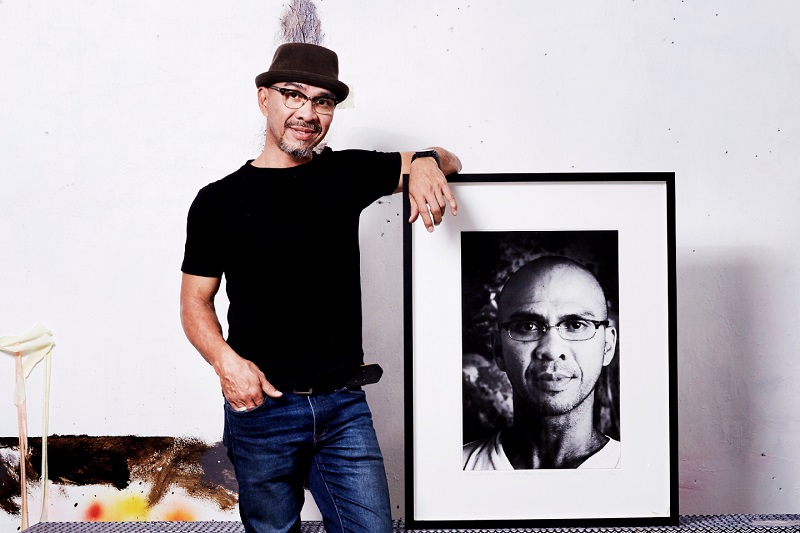
A master of self-portraits and large-scale paintings, what immediately sets a Jai piece apart are his intermeshed stories that lie between colours, shapes and textures, elaborate layering and rich detailed work. Although his father has passed on, Jai regularly travels up to Taiping, where his mother, now 76, lives. “She is actually a Kedahan, the seat of the oldest dynasty and empire in Malaysia. I go back for her cooking. Everything about it has to do with tempoyak and no one can challenge her kari petai lemak!”
A prodigious talent, Jai first caught the attention of the art world by winning first prize in the Young Contemporaries Competition, organised by the National Art Gallery in 1985. That same year, he graduated with a bachelor’s in fine art from the Mara Institute of Technology and received a travel grant as part of the Asean Youth Painting Workshop/Exhibition. In 1988, Jai received his MA from London’s Slade School of Art while on a Malaysian federal scholarship. In 1991, he took home gold at the Hong Kong & Shanghai Bank art competition, followed three years later with first place for drawing in the Murray Hill Art Competition, New York, as well as his MFA from the city’s famous Pratt Institute.
It was during his time abroad that Jai embarked on what would be the journey of a lifetime. “I was at Slade then,” he shares, “and for two years, I tak balik. I had wanted to return home for Hari Raya so I kumpul-kumpul my duit and thought sangat rugi. It was 1987, and the long summer break loomed ahead of me. So I thought I would do it all — travel, save money and balik rumah.”
In a bid to stretch his finances, Jai took the overland route home. “I had £500 worth of Thomas Cook traveller’s cheques, which I guarded with my life! I hitchhiked some way … naik keldai pun ada,” he laughs. The great month-long odyssey began in Belgium. “I bypassed Paris as I knew it was going to be expensive. I did my research lah,” he laughs. “From Belgium, I cut through to Germany, masuk Austria and then Yugoslavia, as it was known then, before masuk Greece. I was lucky to have been in the UK as it was easy to get all the visas done and I covered every country up until India.” In the end, Jai made it as far as Pakistan before deciding to fly home from Karachi. “If I had carried on, probably sambut Raya kat Kathmandu dah,” he jokes. “And, of course, I did not tell my mother. So when I finally told her, after 28 days and a bus ride up to Taiping later, she cried and cried. I still have the diary from that journey.”
The call of home
Jai’s works are paeans to kampung life, all interspersed with traditional Malay elements, myths and stories. Despite his having spent so much time abroad, it is heartening to see that it is Asia, Malaysia in particular, that continues to inspire him most.
Citing his peripatetic younger days, he acknowledges they played a part in his body of work today. “Every time I made friends, we moved. I was a nomad. And coming from the kampung, I wanted to travel and see the world. And yet, travel, I have since discovered, roots you more strongly to your own culture. The further you mengembara, the more you stay rooted. Perhaps that is why I have such a longing for Malay culture, its folklore and way of life. Maybe it’s an artist’s thing, macam Pak Latiff (Mohidin),” he muses, referencing the Minangkabau tradition of sending a young man to wander from his ancestral land in order to learn the ways of the world. “It is old-school but romantic … but I agree that, as an artist, the eye must travel for you cannot be confined to just one way of seeing.”
e788089d-23dc-41b0-b329-799f3e0bd211.jpeg
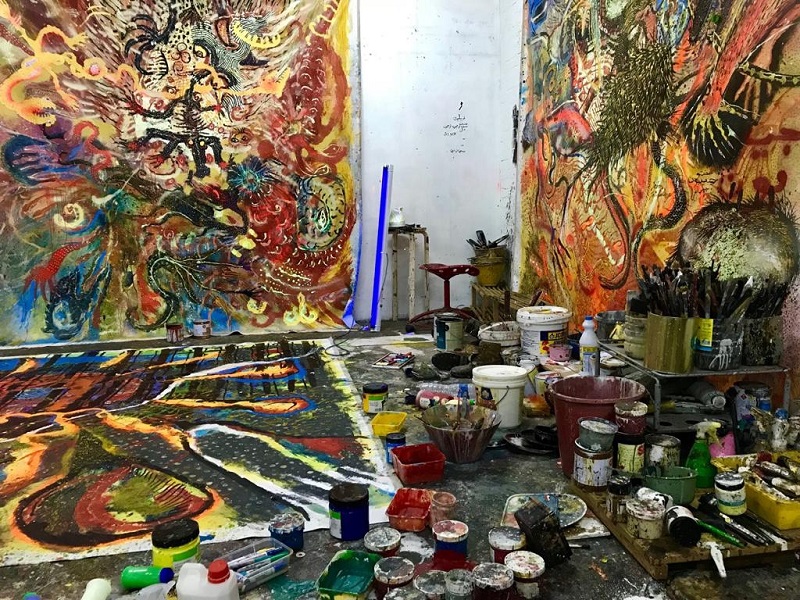
Apart from art, many might not be aware that Jai is also a storyteller beyond the canvas, an expert at the Malay arts of pantun and syair. A pantun is traditionally made up of six kerat (sentences), comprising both a pembayang (hint) and maksud (message). It is metaphorical and must be beautifully rhymed. Syair is straight to the point but gentle. Jai muses: “If I wasn’t a painter, I think I would be a writer or a poet as there were only two things I was good at in school — literature and art.”
Thankfully, new generations of artists have the privilege of being nurtured by the multi-talented Jai, who has been teaching fine art at Universiti Teknologi Mara’s master’s programme graduate school (he holds the position of associate professor) since 1988. “I just received the Academician of the Year 2018 award last month, after 30 years of teaching,” he tells us. “You learn so much when you teach. That’s the irony of it. You enhance yourself constantly … but, in fact, you are teaching yourself … not the students.”
Turning points
But back to the subject of Ghost. With an impish grin, Jai adds: “I want the audience to walk away from the exhibition feeling betrayed!”
“Betrayed?” I ask, confused.
“Yes, I want them to feel as if Jai betrayed them, but in a good sense. Especially my collectors who are so conventionally artsy, who only see art in galleries. I want to kacau them a bit, show them that art can go in many different ways. They already know that Jai is up to something wicked,” he chuckles. “Some have even begun asking if this is a turning point for me or a one-off. I like that people are curious about this. This is also why I ran away from gallery culture after a certain period … Sudah tua.
“This is also the only way for me to connect with the new generation. They are not gallery goers and to bring them on board is to be a part of their culture. You need to play their game. I, too, love the idea of a collaboration as it breaks me away from my cocoon and the notion of romanticising the artist.”
aabc043b-ddf1-4376-acff-f32c580436b9.jpeg
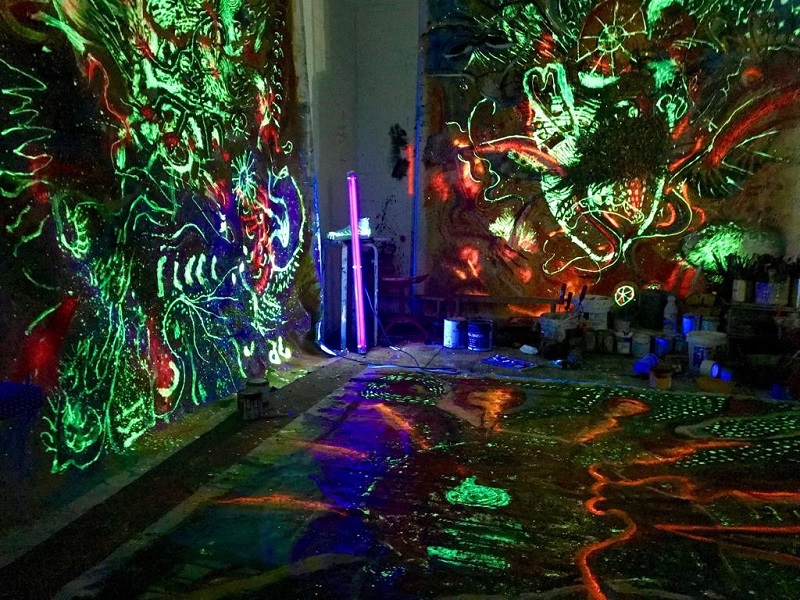
A point with which Tong concurs, saying: “Art is what really inspires and drives ideas forward. And who better to be the driving force for our first event than Jalaini Abu Hassan, one of the pioneers of contemporary Malaysian art?”
“I have always been open to collaborations and this was just good timing,” Jai continues. “I am already a fan of Bell & Ross. I wear its watches. Moreover, collaborations are the new marketing tools for brands. Singers and designers can collaborate, so why not artists? We are all creative and creators. I am glad Bell & Ross sees this and I consider it a win-win opportunity for us both.”
“Initially,” he adds, lowering his voice to a conspiratorial whisper, “I was worried kena lukis jam but you won’t see a watch anywhere on the canvas. I did ask for some dos and don’ts but Tong gave me total freedom, which I respect and appreciate. After all, a collaboration is also about chemistry, a shared vision.”
A case of kindred spirits, perhaps? “Kindred ghosts, you mean,” laughs Jai.
This article first appeared on July 8, 2019 in The Edge Malaysia.


